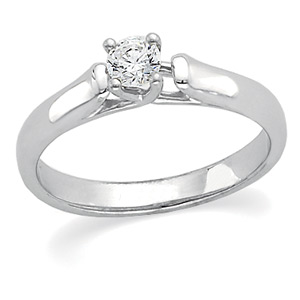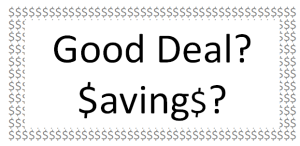 When shopping for jewelry, it can sometimes be hard to tell if you are getting the best price. The key to negotiating the best price for a piece of jewelry is never contingent upon a single piece of information. Getting the best price can be accomplished by combining your market knowledge, understanding of the jewelry supply chain, awareness of the latest trends, and your budget parameters. We will discuss all of these aspects in detail so that when you go to negotiate the best price for a piece of jewelry, you can do so with confidence.
When shopping for jewelry, it can sometimes be hard to tell if you are getting the best price. The key to negotiating the best price for a piece of jewelry is never contingent upon a single piece of information. Getting the best price can be accomplished by combining your market knowledge, understanding of the jewelry supply chain, awareness of the latest trends, and your budget parameters. We will discuss all of these aspects in detail so that when you go to negotiate the best price for a piece of jewelry, you can do so with confidence.
Market Knowledge:
Having a grasp of world events that affect the global jewelry trade is the first step towards understanding the jewelry market. Rising costs of materials such as precious metals, gemstone shortages, and even political upheavals can all affect the price of jewelry. The world is changing fast, particularly the world of jewelry, and because of this, it is not realistic to expect to pay the same amount of money today for a comparable piece of jewelry purchased several years ago. Keep in mind that the prices of gold and platinum hit record highs in 2010 and in 2008, respectively. Although prices have come down somewhat, they are nowhere near what they were prior to 2007. Forget what you think you know about jewelry and take the time to discover what is going on today. Do some comparison shopping and make sure you are comparing similar items. “A” grade amethyst is not comparable in price or appearance to “AAA” grade amethyst. Make sure you know what you want – just looking for a ‘blue‘ stone doesn’t cut it (pun intended!) – there is a big difference in price between Topaz and Aquamarine, and Tanzanite vs Sapphire.
time to discover what is going on today. Do some comparison shopping and make sure you are comparing similar items. “A” grade amethyst is not comparable in price or appearance to “AAA” grade amethyst. Make sure you know what you want – just looking for a ‘blue‘ stone doesn’t cut it (pun intended!) – there is a big difference in price between Topaz and Aquamarine, and Tanzanite vs Sapphire.
Supply Chain:
A piece of jewelry will travel through many lands and pass through many hands before it gets to you. And at each stop along the way of the supply chain, the jewelry will get more and more expensive! A miner will sell the rough gemstones to a gem dealer or lapidary who will cut and polish the gems. The gem dealer will then sell them to a jewelry manufacturer who will mount the gemstone. The jewelry manufacturer may sell the piece to a wholesaler, who then sells to a retailer, who finally sells it to the customer, you! At every exchange, the price of the jewelry will increase, sometimes as much as 300%. Get an understanding about the type of business you are buying from and where they are on the supply chain. Buying from a retailer who is also a manufacturer may save you a considerable markup in price.
Trends:
Jewelry, a consumer item that people buy not out of necessity but for emotional reasons, is still subject to the laws of supply and demand. A trendy piece of jewelry might be something that a seller is unwilling to discount because demand is strong. You will also pay a premium for designer merchandise or jewelry connected with large advertising initiatives. To get the best price, consider purchasing classic pieces or “generic” versions of popular designer jewelry.
 Determining Your Budget:
Determining Your Budget:
Knowing how much you are willing to spend can be a powerful bargaining tool. Sometimes, just asking for a discount can be enough to take up to 10% off of a retailer’s price. Offering to pay cash can sometimes inspire a retailer to present a discount as well. Being prepared to walk away if a price is too high can sometimes provide impetus for a seller to lower the price- but only if the person you are dealing with has the authority to do so. Before negotiating a price, make sure you are dealing with someone who has the authority to make prices adjustments.
Know what you are looking for and have a sense of what sellers are charging. Understand your chosen venue and where it is on the jewelry supply chain. Be aware of the latest trends and don’t be afraid to speak up and ask for a discount. Know your limits, bring cash, and be prepared to walk away. If you are shopping online, use a search engine to find discount codes before checking out. Using these techniques will go a long way towards helping you get the best price for the jewelry you intend to buy.
